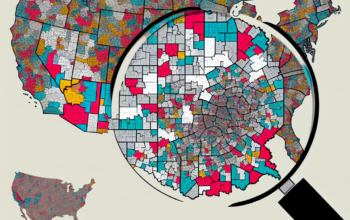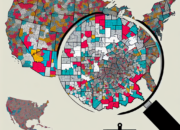Introduction
As the 2025 midterm elections approach, key Senate races are heating up across the United States, capturing the attention of voters and political analysts alike. With a divided Congress at stake, these high-stakes contests will be pivotal in determining the legislative agenda for the next two years. In this article, we will explore the dynamics of crucial Senate races, the candidates and issues at play, and the implications for both parties as they maneuver through this election cycle.
The Landscape of 2025 Senate Races
The 2025 midterm elections feature an array of competitive Senate races that could shift the balance of power in the U.S. Senate. Currently, Democrats hold 50 seats, and Republicans hold 50 seats, with the Vice President holding the tie-breaking vote. This year, 34 Senate seats are up for grabs, primarily focusing on states that have recently experienced demographic shifts or significant political transformations. Key battlegrounds like Pennsylvania, Arizona, and Georgia are once again at the forefront, as each party plans its strategy to either solidify its majority or gain control.
In Pennsylvania, incumbent Senator Bob Casey faces a tough challenge from a rising Republican star, who has been gaining traction among independent voters. Meanwhile, in Arizona, Senator Mark Kelly is vying for re-election amid mixed approval ratings, as local issues such as immigration and water rights take center stage. These states not only embody the traditional battlegrounds but also reflect the changing priorities of the American electorate in 2025, emphasizing issues like climate change, healthcare, and economic recovery post-pandemic.
Key Candidates in the Midterm Elections
Understanding the candidates is crucial in assessing the potential outcomes of these key Senate races. In Pennsylvania, Republican challenger Sarah DeSantis, a former state legislator, has positioned herself as a pragmatic alternative to the lifelong politician Bob Casey. DeSantis has tapped into a wave of grassroots support by focusing on local economic issues, appealing to working-class voters disenchanted by traditional party lines. Her campaign emphasizes job creation, infrastructure investment, and education reform, resonating with citizens concerned about stagnant wages and rising costs.
Conversely, in Arizona, Senator Mark Kelly is leveraging his military background and astronaut status to bolster his image as a leader who can navigate complex challenges. His campaign underscores the urgent need for bipartisan solutions to combat climate change and address healthcare disparities. Kelly’s unique narrative not only draws voters’ attention but also sets him apart from his opponent, who aims to capitalize on more conservative stances. The contrast between the candidates’ policies and visions will likely mobilize voters on both sides, intensifying the national focus on these races.
Voter Turnout and Engagement Strategies
One defining feature of the 2025 midterm elections is the emphasis on voter turnout. Both parties recognize that energizing their base—and persuading undecided voters—will be crucial for success. Get-out-the-vote campaigns are being aggressively launched, utilizing social media platforms, direct mail efforts, and community outreach programs to engage voters. The focus is not just on mobilizing registered voters but also on reaching younger demographics who may have previously felt disenfranchised in the electoral process.
Additionally, innovative strategies are being employed to reach voters in underrepresented communities. Both parties are investing significant resources in grassroots organizing aimed at addressing specific local issues. For instance, Democratic campaigns may focus on the importance of accessibility in healthcare, while Republicans might emphasize economic recovery and job creation. The approach to voter engagement this year reflects a more nuanced understanding of voters’ concerns, aiming to build a connection that resonates deeply on a personal level.
Impact of National Issues on Senate Races
National issues are expected to play a critical role in shaping the narratives of key Senate races in 2025. After experiencing significant bouts of inflation, the economic landscape has become a focal point of many campaigns. Candidates are positioning themselves as agents of change, offering competing plans to combat rising prices and improve wages. The ability to present a clear, actionable economic strategy could greatly influence undecided voters who are grappling with pocketbook issues.
Additionally, the legislative landscape surrounding gun control and reproductive rights continues to loom large as essential elements of campaign discourse. The recent Supreme Court rulings have invigorated advocacy groups on both sides, leading to mobilized grassroots efforts. Candidates who can effectively communicate their stances on these topics and respond to constituents’ concerns will be better positioned to win over voters. The heightened focus on social issues reflects a broader trend in American politics, as constituents increasingly prioritize candidate values alongside policy proposals.
Polling Data and Political Predictions
As the election approaches, polling data becomes a crucial tool for interpreting the electoral landscape in key Senate races. Recent surveys indicate a competitive environment, with many races in states like Pennsylvania and Georgia presenting a statistical tie. Analysts note that fluctuations in voter priorities and external events—such as economic turmoil or significant policy announcements—could sway these races dramatically.
Political predictions suggest that turnout will be a decisive factor. High-profile endorsements and campaign spending have surged as candidates work to capitalize on name recognition and party backing. Social media campaigns are not only tracing candidate sentiment but also revealing voter engagement levels across different demographics. As the midterm elections draw closer, shifts in public perception will undoubtedly play a role in defining candidate viability and ultimately influencing election outcomes.
Conclusion
As the midterm elections loom on the horizon in 2025, key Senate races are heating up, promising to shape the course of U.S. politics for years to come. With competitive candidates, evolving voter concerns, and pivotal national issues at stake, the landscape is dynamic and charged with potential outcomes. The focus on voter turnout and engagement strategies further highlights the competitive nature of these races. Both parties are keenly aware that the results will extend beyond individual Senate seats and directly impact the legislative agenda and political discourse across the nation.
FAQs Section
What are the key Senate races in 2025?
The key Senate races in 2025 include contests in Pennsylvania, Arizona, Georgia, and Nevada, where incumbents face significant competition from challengers.
How are candidates preparing for the 2025 midterm elections?
Candidates are preparing through extensive voter outreach campaigns, grassroots organizing, and by leveraging social media to engage voters on key issues affecting their states.
What national issues are influencing Senate races in 2025?
National issues such as economic recovery, gun control, reproductive rights, and climate change are significantly influencing Senate races, shaping candidate platforms and voter concerns alike.
How important is voter turnout in the 2025 midterms?
Voter turnout is crucial in the 2025 midterms, as high engagement levels among key demographics could determine the outcome of several competitive Senate races.
What strategies are candidates using to engage voters?
Candidates are employing a variety of strategies, including door-to-door canvassing, targeted social media campaigns, and focusing on issues that resonate with specific voter groups to encourage turnout.












